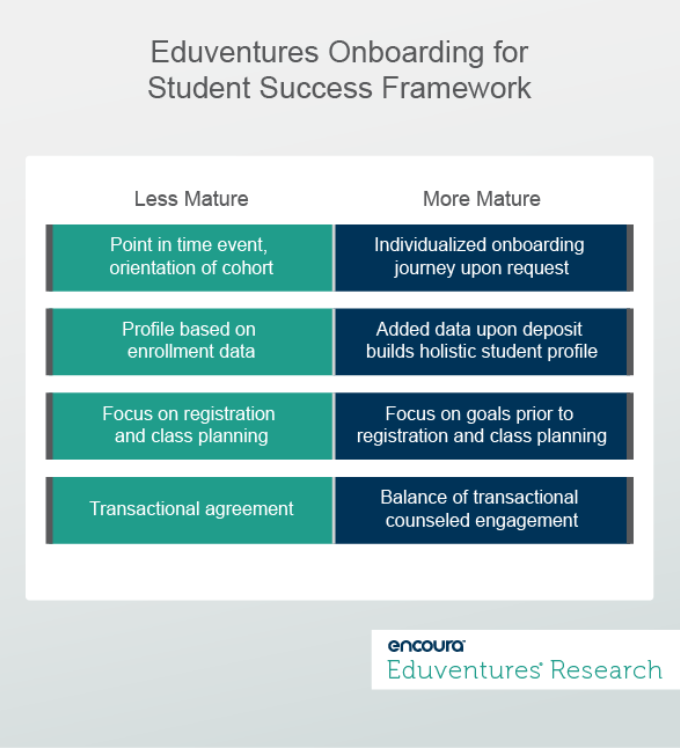Student onboarding versus student orientation: Lessons from post-secondary research
by John Watson
Most online and hybrid schools recognize that their instructional models will be new for many students, and often they offer an orientation course for new students. A discussion at Eduventures Research, however, points out that online and hybrid schools would likely benefit their students by taking a much more robust approach to helping students understand their new school. Eduventures draws lessons from the corporate world to make suggestions for higher education; most of these in turn are applicable to K-12 schools as well.
The discussion builds on the idea that many companies help new employees understand the company through an onboarding process. These processes are often more robust and ongoing than the typical student orientation process.
As shown in the diagram from Eduventures Research, key elements of robust onboarding efforts include that they:
recognize onboarding as a journey, not a point in time event;
build a profile of the student that goes beyond enrollment data; and
seek to focus on student school, life, and career goals, not simply on the courses they need in the near-term.
In sum, the orientation process focuses on how the school can get the student enrolled and in classes. The onboarding process widens that focus to understand how the student will be successful much more broadly.
Eduventures explains that “Students choose their institutions because they have big goals and big dreams. Course registration and class planning are certainly important facets of advising, but good onboarding ensures that student goals lead the conversation with course selection as the logical follow-on to goal-setting, not the other way around.”
Eduventures goes on to suggest four framing questions and a short conclusion:
What are your goals for student onboarding?
Who is involved in student onboarding?
How will you use data and technology to catalyze onboarding?
How will you know when students are successfully onboarded?
“It’s a big ask to know where every student stands. But this proactive approach to student success could see small problems long before they grow into critical issues for students and eventually into enrollment issues for your institution. We’ll leave you with this question, what if institutions turned the retention problem around asking not about how to retain students, but how to integrate students? Perhaps onboarding as an approach to student success could accomplish this.”
The entire post is worth reading for anyone thinking about student success in a new learning environment.

